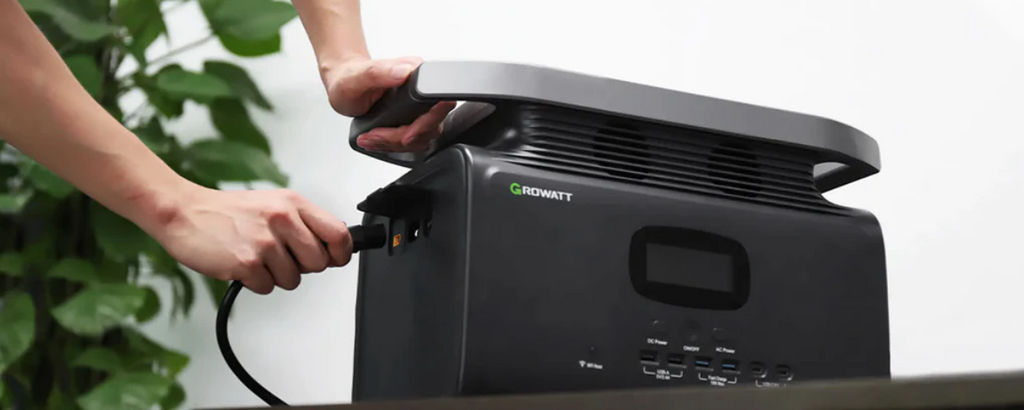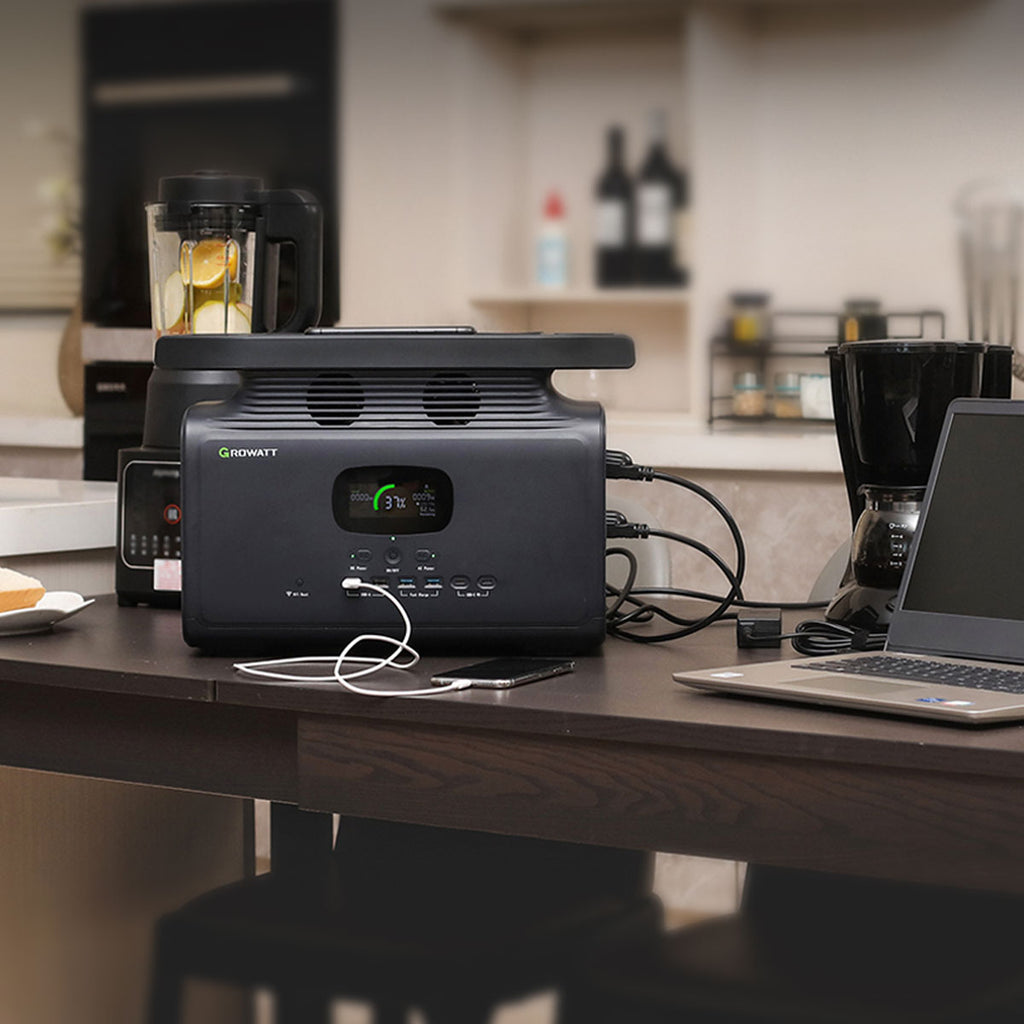It is undeniable that most people rely on electronic devices (especially smartphones) because there are a lot of things that your device can do for you. Most of the things that you need in your daily life have it! That is why running out of battery, be it on smartphones or laptops, is such an inconvenience especially when you are in the middle of something important. Before, people would look for outlets to recharge their devices but thanks to our renowned researchers and inventors, a power bank has been brought into this world.

A power bank is a portable charger for your electronic devices that can be used off the grid. The first power bank was created in the year 2001 by a Chinese company. Through its innovations, did you know that there are even types of power banks known up to this day? But what if your power bank runs out of battery as well when you need to charge your device? The question is, is it possible to charge your power bank while your device is also plugged into it? The answer is yes! And that is through the process of pass-through charging.
Power Banks and Portable Power Stations
Pass-through charging is not only applicable to power banks but it can also be used in portable power stations. But how do power banks and portable power stations differ from each other? Both can be a reliable source of power when off-grid. Power banks would come in sizes that would fit in pockets while the portable power stations are bigger, and in capacity as well.
Power banks are best used on the go. With its size, it is highly convenient and very reliable for daily use. They are primarily for mobile phones, tablets, and other small devices. It has a USB port wherein your cable can be connected, but there are also other features such as wireless charging, and power banks with built-in cables. Power banks are charged through the wall outlet.
On the other hand, the portable power station is also a source of electricity, they have larger batteries and capacity compared to power banks. This can power larger appliances such as refrigerators, TVs, microwaves, and the like. This has various ways of charging, and one is through solar charging – which is by placing them in an area with sunlight and then connecting the portable power station to the solar panel. Portable power stations are mostly used during power outages since they can be a huge source of electricity and during outdoor activities that may require a stable supply of power.
Defining the Pass-through Charging
Before we dive into the more in-depth information about pass-through charging, let us first identify it in simple terms. Pass-through charging is the process that allows your power bank or portable power station to be plugged into the main source while your device that needs charging is also plugged into it. It’s like allowing two devices to be recharged at the same time.
In this technology, the current flow passes through a battery pack (power bank/portable power station) going to the device connected to it. It is like sharing energy from the main source.
Pass-through charging can be classified into two, these are direct pass-through and charge-discharge pass-through.
In direct pass-through, the current that comes from the outlet will go directly to the device connected to the power bank. It’s like the battery pack is serving as a bridge for the device to receive current. On the other hand, charge-discharge pass-through will first recharge the power bank until it reaches a certain threshold, then it can be utilized to power another device.
Pass-through charging can be applicable in situations such as emergencies due to sudden power interruption, outdoor activities (road trips, camping), and remote work. Pass-through charging can also be used as a backup power into your entire home. This is done by connecting your power station to a solar panel and connecting your essential devices into it such as lights, fans, or routers.
Pass-through Charging: How Does It Work?
It may seem like it, but pass-through charging does not co-occur. To debunk the claim, pass-through charging works in this way:
The smart circuit regulates the flow of electricity between the external power source, the internal battery, and the device connected to it – and that is how pass-through charging works. This circuit ensures that the portable power station is capable of supplying power to the charged devices.
Its capability of charging depends on the external power source. If your external power source provides 100W of power, and your PPS has a 100W input port, then you may use up to 100W amount of power to charge your devices. If the external has 100W but your input port has 50W, then you can only use 50W.

For power banks, it is plugged into the wall outlet while the other device is connected to it; if the power bank does not have enough power to share, the other device will not receive any. The power bank will first charge itself and once it has reached a certain level, it will now switch from receiving power from the outlet to being the source of power to the device connected. In that way, it does not occur simultaneously, but instead, it goes through a process.
This technology does not guarantee a 100% percent fully charged power bank because when you unplug it, some of its stored power might have been shared with the device charged to it. However, this could be very useful at times when there are limited wall outlets available, and you are in urgent need of recharging your devices.
Pass-through Charging: Its Pros and Cons
Advantages
- Convenience:First on the list is its convenience; with this technology, the user would not need to look for a power outlet to recharge. This is perfect for people who are always on the go and use their electronic devices until batteries become so low. Using a portable power station will prevent your batteries from getting easily drained.
- Flexibility:Pass-through charging also saves time. The user would not need to wait to recharge their power station before it can be used for another electronic device. Additionally, it can increase productivity. Why? Utilizing this type of technology makes your device always accessible, so if you have work that relies on smartphones, you can do it anywhere without worrying about your laptop or smartphone being low on battery.
- Efficiency:Lastly, it can be energy efficient. In this process, you have an option to charge your portable power station and other electronic device at the same time – reducing energy waste. How can it reduce energy waste? Not to mention that the portable power station has multiple ports for charging devices, the standby electricity consumption will be minimized as well as the need to charge multiple devices separately.
Disadvantages
One of the disadvantages is that your device may be recharged for a prolonged period. Because the electricity is being shared by two devices, neither device would receive 100% of the current flow. Overheating, of course, is also on the list of disadvantages. There is a potential generation of heat for your devices especially when you are using it while it's charging. However, this downside is not actually a dilemma because there are portable power stations that feature overheating protection.
Based on how it works, this technology is inefficient. Still, the best way to recharge your electronic gadgets is by simply connecting them to the wall outlet. But then, this pass-through charging is a good option for emergency cases.
Pass-through Charging: Its Danger to Batteries
Even if pass-through charging may give us a lot of conveniences, it does not mean that it will not cause harm to your device. Anything that is misused will result in damage. When you are in the process of charging, you should avoid using your device to allow it to completely recharge. This may cause overheating which deteriorates the battery of both your devices. Since the process of pass-through charging is longer than the usual one, there is a bigger chance for a heat build-up with both of your devices. The heat caused by the pass-through charging would not only result in damage to the lithium batteries that your power banks have, but it also increases the chance of explosions.
On the other hand, overheating may not be applicable in portable power stations when in pass-through charging because there are types of devices that have overheating protection.
Additional Information: Using a Portable Power Station in your Pass-through Charging
Since we are talking about pass-through charging, we might as well add some information about portable power stations. What are these? Portable power stations are devices that can be a source of electricity when off-grid. These are widely used during emergencies and outdoor activities.
If you are wondering if PPS supports pass-through charging, the answer is yes. Although the power that it produces does not come directly from the outlet, it can still be a source of energy for your device.
Portable power stations can be solar-powered. Here is how you can achieve pass-through charging with a portable power station.
First is to charge your PPS using solar energy. All the harvested energy from the sun will be stored in the PPS as battery capacity. Once it has sufficient energy, you may proceed with the pass-through charging. This is most effective when you are using your equipment properly, have the correct wiring and connections, and your devices are compatible with each other.

Additionally, portable power stations can also be recharged through wall outlets or car chargers. You just simply need to plug the compatible adapters into the socket then you’re good to go. You may refer to the screen in your portable power station to see if the charging is in progress. Pass-through charging allows the portable power station to charge its built-in batteries and connected devices simultaneously. In simple terms, your portable power station can be plugged into a wall outlet, or through solar panels, then it will be used to charge your devices. In this feature, you do not need to wait for the portable power station to fully charge before actually using it.






